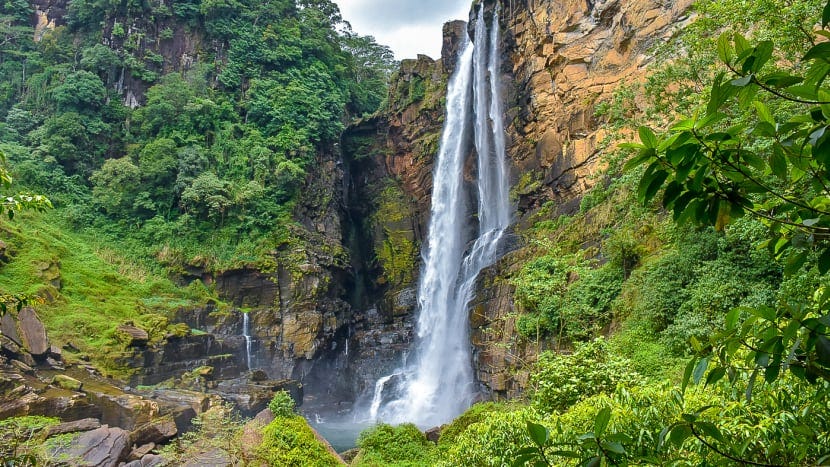Weather in Sri Lanka
Weather is a leading fact when it is coming to deciding the best time to visit Sri Lanka have a Sri Lanka road trip. Therefore we thought of discussing the Sri Lanka weather and holiday pattern in details with this post.
Weather in Sri Lanka is a tropical, climate in Sri Lanka can be described as summer climate with slightly fluctuating temperature and humidity throughout the year. The main factors that are shaping the Sri Lanka weather are identified as temperature, rainfall and wind. While being located in the tropic, the influence of the Indian Ocean, proximity to the Indian mainland and central mountain range are the minor factors.
Sri Lanka is located between the 5 and 9.5 of north latitudes hence Sri Lanka weather can be described as warm and humid like in most of the tropical countries. The average temperature of the South-West part of the country records around 28C˚. The northern and eastern part of the country experiences a warmer climate, which measured to be around 30C˚.
22 Sri Lanka Beaches With Idyllic Settings
There is a large difference between the temperature along the coastal belt and the mountains in the central part of the country. Every hundred meters above the sea level resulted in a reduction of the temperature by 1 C˚. Since the island is surrounded by the Indian Ocean temperature on the land is moderated by the sea wind. Even the high temperature is moderated by the sea wind. The rainfall is considered as a major factor in deciding the weather of Sri Lanka.
The country is divided into three climatic zones depending on the rainfall namely dry zone, wet zone and arid zone. The monsoon rain that soaks the island throughout the year is a major factor for deciding the temperature of the country. The temperature of South-West Sri Lanka considerably drops during the South-West monsoon and the North-East monsoon reduces the temperature of North-East parts of the country.
The country is divided into three climatic zones depending on the rainfall namely dry zone, wet zone and arid zone. The monsoon rain that soaks the island throughout the year is a major factor for deciding the temperature of the country. The temperature of South-West Sri Lanka considerably drops during the South-West monsoon and the North-East monsoon reduces the temperature of North-East parts of the country.
The temperature in the island greatly differs in some parts of the country depending on the elevation. The central mountain records the highest variation of temperature. The temperature fluctuates from 20°C to -2°C resulting in frost in the evening and night. Temperature fluctuation is comparatively low in the low-altitudes, where the temperature lies between from about 35°C to 28°C. Day and night temperature variation in the low altitudes mostly recorded as 4°C.
May to June, is the hottest period of the year and February records the minimum rainfall in the island. Yearly rainfall of the country is influenced by the monsoon wind, which occurs from Nov to April (North-East monsoon) and from April to Nov (South-West monsoon). Different parts of the country are soaked by the monsoon rain in the different periods of the year, making it rain somewhere in the country at any given time.
Summer monsoon wind enters the island from South-West borders of the country and goes up upon encountering the Central Highland. The rising wind forms the clouds and uploads heavy rains in the South-West part of the country. Average rainfall in the region, where the summer monsoon occurs (wet zone) measured between 2500 mm – 5000 mm and nearly 30% of the island is coming under the wet zone. Rest of the country records half of the yearly rainfall as the wet zone. Where the rainfall is measured between 1250 mm to 2500 mm. dry zone mainly benefits from the winter monsoon that occurs from Nov-Apr.
Summer monsoon wind enters the island from South-West borders of the country and goes up upon encountering the Central Highland. The rising wind forms the clouds and uploads heavy rains in the South-West part of the country. Average rainfall in the region, where the summer monsoon occurs (wet zone) measured between 2500 mm – 5000 mm and nearly 30% of the island is coming under the wet zone. Rest of the country records half of the yearly rainfall as the wet zone. Where the rainfall is measured between 1250 mm to 2500 mm. dry zone mainly benefits from the winter monsoon that occurs from Nov-Apr.
High humidity is recorded in the South-West part of the country, where the moisture accumulates due to the constant wind from the Indian Ocean. The humidity of the South-West part of the country measured as high as 95% especially during the monsoon, while the average humidity is recorded as 85%. North-East Sri Lanka records low humidity percentage compared to the wet zone due to the low percentage of moisture in the winds that enters the country from the North-East border of the country. When the winds come from the Indian mainland it comes across a land thereby contains a low amount of moisture. In the mountains at the elevation of 500m above the sea level average humidity ranges between 70% and 79%. Dry zone regions such as Anuradhapura shows less humidity compared to the wet zone and measured between 60% - 79%.
